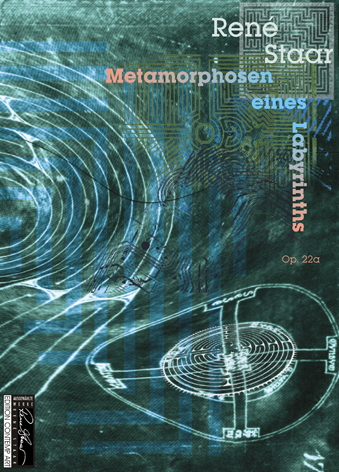For 10 solo strings accompanied by a solo violin
Dedicated to the Wiener Streichersolisten »in memoriam Christian Zalodek«
The »final version« is dedicated to the city of St. Petersburg on the 300th anniversary of its founding.
For 1 Solo Violin, 4 violins, 2 violas, 2 cellos and bass
Duration: ca. 17 minutes
First version: 1991
Premiere of the first version: Juni 25, 1991, Festival de Paris (Salle Gaveau), with the Wiener Streichersolisten
Austrian Premiere: 1992, Musikverein (Vienna), cycle »150 Jahre Wiener Philharmoniker«
Premiere of the second version: 1992 in Sendai, Japan
Final version: 1995–2003
Premiere of the final version: Juni 29, 2003, St. Petersburg (Philharmonic hall), as part of the »White Nights« festival, with the Wiener Streichersolisten and the composer
Austrian Premiere of the final version: Autumn 2004, Graz (Stefaniensaal)
First performance in Finland: Juni 30, 2003, at the festival in Mikkeli
Score: ECA Nr. 9014 Score (Extract, Pdf)
Available through:
Edition Contemp Art (Verlagsgruppe Hermann)
Goldschmiedgasse 10, A-1010 Wien
E-mail: sales{at}hermann.eu | tel: +43 / 1 / 534 62 40 | Fax: +43 / 1 / 534 62 67
Audio sample:
|
René Staar - Metamorphosen eines Labyrinths op. 22a |
|
Wiener Streichersolisten, René Staar
Live-Recording of the premiere of the second version, Tokyo 1992
Preface:
From the classical saga of the Minotaur up to the soul transmigrations of twentieth-century psychoanalysis, the labyrinth has time and again proved to be an adaptable symbol. The esoteric nature of scientific knowledge and the technical capacities of our time, combined with human incapacity to understand and master causal connections, create a new form of labyrinth, one with no evident exit, riddled with fears for the future. Man paradoxically succumbs to the fascination of the new and unexpected, thus provoking constant metamorphoses of this labyrinth. It expands to become a labyrinth of feelings ranging from exhilaration to despair. Franz Kafka’s Letters to Felice reveal both the artist’s fears that firm commitment to a beloved could restrict his creative powers, and his painful longing to express himself through his art for just that very person—who would then not understand. This labyrinth, whose invisible walls are our surroundings and whose secret prisoners our feelings, is the compelling force behind René Staar’s work.
The subtle irony of the scoring indication »for 10 solo strings accompanied by a solo violin« already points to one of the essential ideas of the piece: the contrast between group dynamic and individual expression of the components, in which the solo violin grows out of the substance of the string body.
The individual, represented by the solo violin, is confronted by the labyrinthine surroundings of the string ensemble. The labyrinth is represented spatially through various distributions of the ensemble as well as acoustically through motivic and harmonic means. The headings of the various sections, such as Waking in the Labyrinth, The Inescapability of the Labyrinth, or The Beauty of the Labyrinth, express not only the erratic mutations of our feelings (presented by the solo violin), but also the irrevocable and unswerving metamorphoses of our surroundings, of The Labyrinth. Man’s striving to escape from this labyrinth leads only to the realization that he is trapped in yet another larger, perhaps fascinating, perhaps terrifying labyrinth.
Indirect encouragement for the work, which René Staar wrote with the help of his chord realignment theory, came from Philippe Entremont, who had in 1986 upon the occasion of the premiere of Just an Accident? op. 9 in New Orleans asked the composer and his libretto author Alan Levy to write an opera based upon texts by Kafka. Metamorphoses of a Labyrinth was written in the first months of 1991 as a form of prologue to this work. The work was premiered that same year at the Festival de Paris by the Wiener Streichersolisten, to whom it is dedicated.
Several revisions finally led to a definitive version, dedicated to the City of St. Petersburg upon the 300th anniversary of its foundation. {René Staar, Translation: Jorge E. López}



